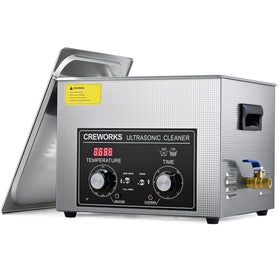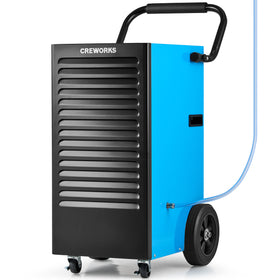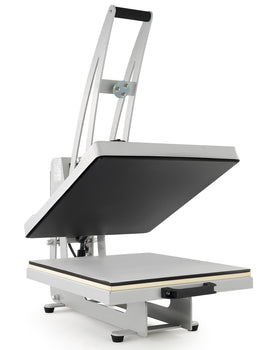With over 10000+ orders
With over 10000+ orders
Having an ultrasonic cleaner is the ultimate hack because these devices can do so many things. However, you must be super careful while using them, as even the slightest negligence will damage your belongings and the machine itself. Many often make the mistake of putting these three things in their ultrasonic cleaners and regret it later on.
Are you curious to know what not to put in an ultrasonic cleaner? Sounds great. This blog will give you a detailed walkthrough and tell you which vendor to approach for the best ultrasonic cleaners.

To understand why these objects and substances damage your ultrasonic cleaner, you need to have a basic understanding of how an ultrasonic cleaner works. It’s pretty simple. The tool transmits sound waves at high-frequency levels. These sound waves create microscopic bubbles. The bubbles collapse, cleaning the dirt off the things put inside the cleaner. However, its strong cleaning method does not invite a few things. Let’s see what they are.
The first on the list are delicate components or loose parts. These can be the following:
Ultrasonic cleaners work well for cleaning metals like gold, silver, and platinum, as well as hard gemstones like diamonds, rubies, and sapphires. However, there are some pieces that should not go in an ultrasonic cleaner. Do not put any of the following in your cleaner:
Soft stones (e.g., pearls, opals, emeralds, turquoise, amber, coral)
Porous stones (e.g., malachite, lapis lazuli)
Heat-treated or fracture-filled stones (they can crack or discolor)
Loose stones or jewelry with glued components (the vibrations can loosen or break the bond)

If your watch is mechanical, has electric components, or isn't water resistant, it is suggested not to put it in the ultrasonic cleaner. Ultrasonic cleaners can damage the inner mechanisms and seals, even in water-resistant watches (in some cases). They emit immense vibration and pressure, which can easily damage the complex mechanism of your watch. Do you want that to happen? We guess not!
Basically, any item with electrical components should not be anywhere near an ultrasonic cleaner. You do not want to see your electronic items, especially the small ones designed with the utmost delicacy, stop working after passing them through the ultrasonic cleaner. The tool will dislocate the internal components or cause any type of electrical wear.
If you are unsure regarding the cleaning of the above-mentioned cleaning, then make the most out of other suitable cleaning practices instead of the ultrasonic cleaning machine.
Then, next in line we have items made out of particular materials. These are as follows:
Do you want to see your special pearls cracked or become loose? No right! That is exactly how the vibration of the ultrasonic cleaning machine can affect your valuables.

The ultrasonic cleaner’s vibration will not suit the surface of the ivory. The pressure will make it discolored or brittle. Therefore, don’t try to clean your things made out of ivory.
There are woods that come ahead with complex patterns consisting of grains. Even they are not compatible with the cleaning machine as the pressure can adversely affect the design of the wood.
If you have turquoise or opals, they also belong on the list of what not to put in an ultrasonic cleaner. These gemstones are sensitive to the pressure and vibration of the ultrasonic cleaner. Hence, use other ways to clean them.
It is highly suggested if any of the above-mentioned items need intense cleaning, you should do it manually as the machine will badly disappoint you.
You will put your life and others in danger if you plan to clean items comprising of grease, oil, or other flammable substances in the ultrasonic cleaner. Why? These things can explode on exposure to the machine’s heat, produced by the ultrasonic cleaner’s vibration.

Quit the thought of cleaning items consisting of corrosive substances such as acid, alkalis, or more dangerous ones in your ultrasonic cleaner. Moving ahead with the cleaning might cause a chemical reaction between the corrosive substance and the high-frequency waves emitted by the cleaning machine, resulting in damaging the item and the cleaner as well.
Therefore, remember not to put similar items in the ultrasonic cleaner as the reaction may even cause an explosion, or damage the tool itself.
Have you been looking for a premium-quality ultrasonic cleaner? Then no need to look further as your search has ended. You are more than welcome to visit CREWORKS and explore their website. The platform is packed with ultrasonic cleaning machines to offer you the desired cleaning. For instance, you can check out the Ultrasonic Cleaning: Professional Ultrasonic Machine with Heater, and Timer. The tool offers a user-friendly navigation panel, a degassing function, 360 cleaning feature, timer control, gentle mode, long-lasting durability, and enhanced heating. Or the Ultrasonic Cleaning: Professional Ultrasonic Machine with Heater, Timer because it impresses you with a degassing function, user-friendly navigation panel, 1-99 Timer, and enhanced heating. Use any of these ultrasonic cleaning models and say bye to the cleaning hassles you have been experiencing.
Besides these things, we have compiled some necessary precautions to keep your things and the ultrasonic cleaner safe. They are as follows:
Yes, hot water does speed up the cleaning process, but the same temperature can damage some items. Hence, refrain from using hot water and go for a lukewarm one, to keep things right.
To see your things spotless, buy and utilize a cleaning solution that takes full marks in boosting the cleaning power of your machine. Plus the cleaning agent should also protect your items, otherwise your efforts and investment will be of no use.
After buying your preferred ultrasonic cleaner, it will be best for you to read the manufacturer’s instructions. The manual might carry specific ways to tell you what to and what not to put in an ultrasonic cleaner.
We hope the blog has cleared your doubts regarding what you can not put in the ultrasonic cleaner and if you have previously done any of the above-mentioned blunders, you will be alert while cleaning.











